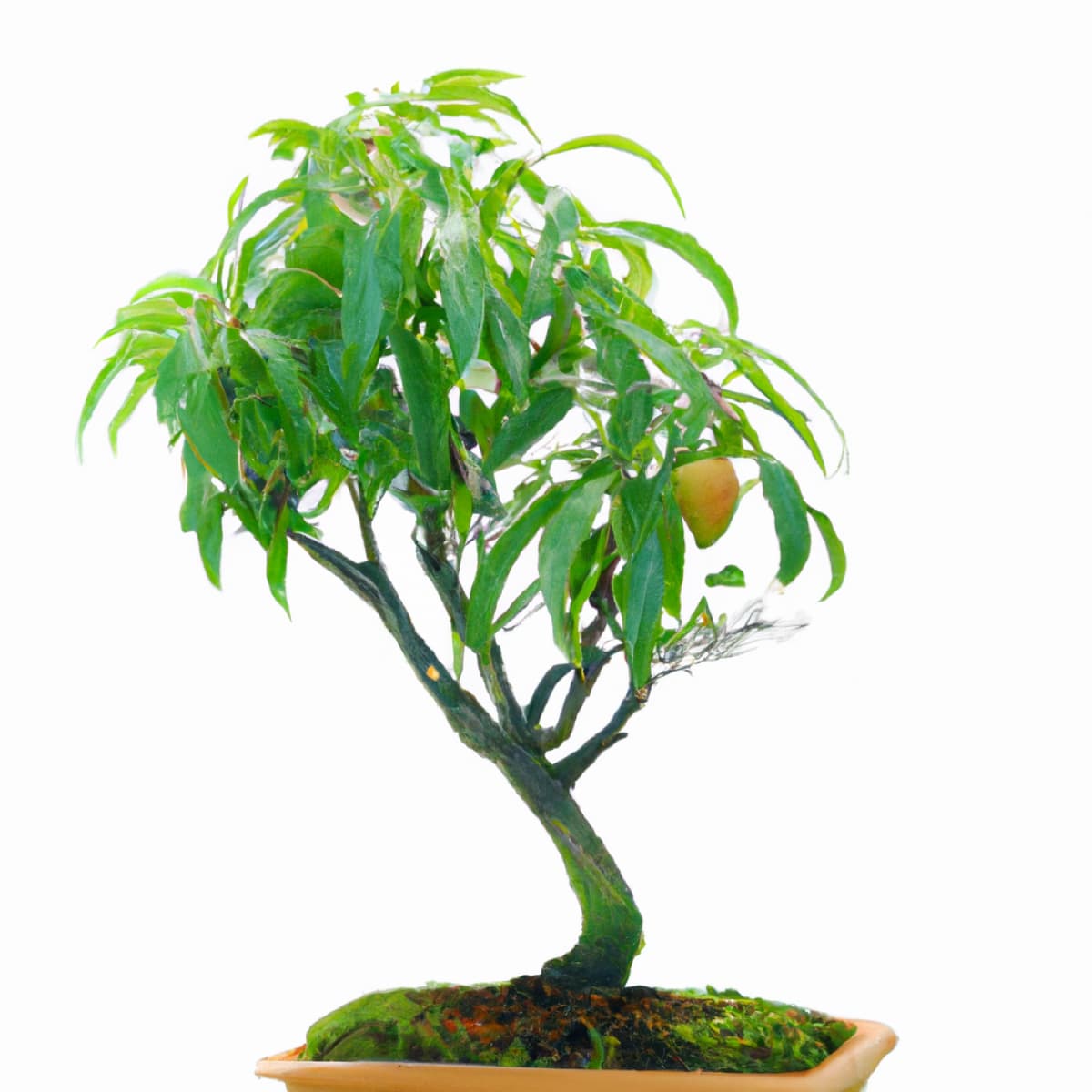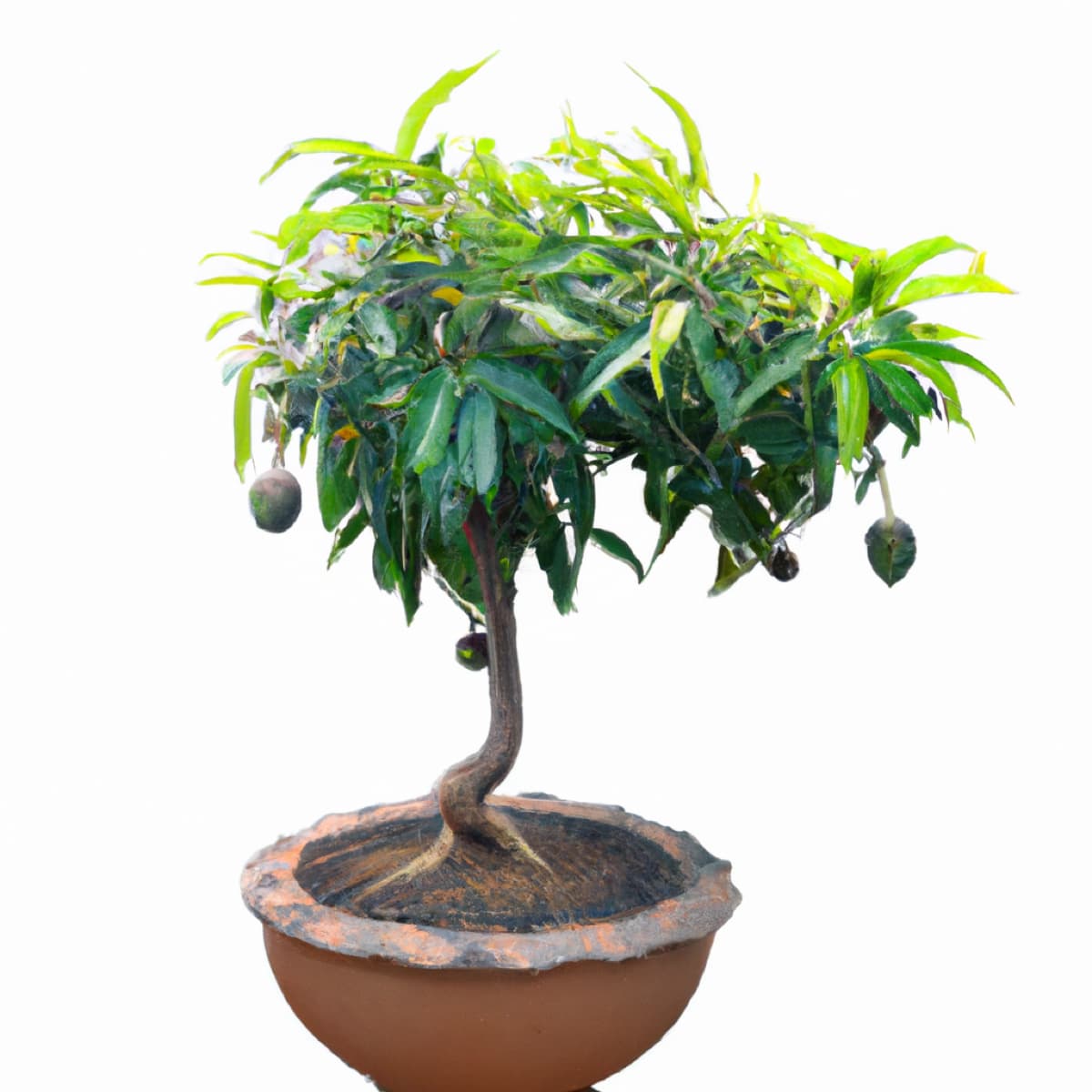Bonsai, an ancient Japanese art form that dates back over a thousand years, offers enthusiasts a unique way to cultivate and enjoy plants and trees on a smaller scale. The mango bonsai is one of the less conventional but enchanting types of bonsai. This tropical fruit tree can be a beautiful miniature, producing fruits in the right conditions. This article will focus on creating a mango bonsai from seed and how to make, nurture and care for a bonsai mango tree.

How to Grow and Care for Mango Bonsai
How to Plant a Bonsai Mango Tree
Starting a mango bonsai from seed can be a fascinating experience. The first thing you’ll need is a mango pit. You can acquire it by enjoying a fresh mango and carefully extracting the pit. It’s crucial to wash and dry the seed before using it. Plant the pit half-buried in a mix of potting soil and sand, flat side down. Maintain moist soil without excessive soaking. With proper care, the mango seed should sprout within one to three weeks, signifying the beginning of your bonsai journey.
Choosing the Right Soil Mix for Bonsai Mango Trees
The appropriate soil mix is vital for your bonsai mango tree’s health. Given mango trees’ tropical origins, they prefer a well-draining, fertile soil mix. A 60% organic compost blend and 40% coarse sand could provide an ideal environment for roots, ensuring good nutrient supply and drainage. It also helps to maintain the right pH level for the bonsai tree. Adjust the mix if your tree isn’t thriving as expected, as individual plants can sometimes have unique requirements.
Watering Schedule for Bonsai Mango Trees
Watering your bonsai mango tree demands a delicate balance. As tropical plants, mango trees love water, but overwatering can be as harmful as underwatering. The tree’s watering schedule depends on its size, the size of the pot, the time of year, and the indoor or outdoor conditions. Typically, watering once every two days should suffice, but this frequency should be increased during hot, dry periods and decreased during cool or wet conditions. It’s essential to ensure the soil is moist but not waterlogged.
Pruning Techniques for Bonsai Mango Trees
Pruning is key to maintaining the size and shape of your bonsai mango tree. The right pruning technique involves two elements: structural pruning and maintenance pruning. Structural pruning should be done during the tree’s dormant period, typically in late winter.
In case you missed it: How to Grow and Care for Bonsai Grapes: Planting Instructions

You can make significant cuts during this time to influence the tree’s overall shape. On the other hand, maintenance pruning can be done throughout the year to keep the bonsai tree looking tidy and to manage its growth. Always remember to use clean, sharp tools for pruning to prevent disease transmission.
Common Pests and Diseases Affecting Bonsai Mango Trees
Bonsai mango trees, like all plants, are susceptible to various pests and diseases. The most common include aphids, scale insects, and spider mites. These can be identified by the damage they cause, such as curled or discolored leaves or the pests’ presence. A mild insecticide spray can usually handle these problems. Fungal diseases can be combated with appropriate fungicides, signified by mold or mildew on the leaves or trunk. Regular monitoring of your bonsai tree can help you catch issues early before they become severe.
Caring for a Bonsai Mango Tree Indoors
Keeping a bonsai mango tree indoors can be challenging due to the tree’s tropical origins. It requires plenty of light, so it’s best to place it near a window that receives plenty of sunlight. Indoor air can be quite dry, so regular misting of the tree’s leaves can help replicate the humidity of its natural environment. If the tree begins to look unwell, consider moving it to a different location or changing the watering, feeding, or light levels until you find the ideal conditions.
Fertilizing Techniques for Healthy Bonsai Mango Trees
Fertilizing is an integral part of bonsai tree care. Because the tree is in such a small pot, it cannot obtain all the necessary nutrients from the soil. To maintain the health of your bonsai mango tree, regularly use a well-balanced liquid fertilizer every two weeks during the growing season (typically spring to fall). Do remember to water your tree before fertilizing to avoid burning the roots. Also, avoid fertilizing a tree that looks sick or stressed, as this can exacerbate the problem.
Winter Care Tips for Bonsai Mango Trees
Winter care for your bonsai mango tree can be a bit tricky. These tropical trees are not designed to withstand cold temperatures, so they must be kept indoors in most climates during winter. Ensure they receive adequate light during these darker months, either by placing them near a south-facing window or by using a grow light. Adjust your watering routine, as the tree will use less water due to slowed growth. Also, remember not to fertilize your tree during this dormant period.
Repotting Bonsai Mango Trees: Step-by-step Guide
Repotting is necessary for bonsai care, allowing for root pruning and soil renewal.
- Step 1: Carefully remove the bonsai from its pot, trying not to damage its delicate roots.
- Step 2: Prune the root ball, cutting away up to one-third of the mass, to stimulate new growth.
- Step 3: Prepare a new pot, clean the old one thoroughly, and cover the drainage hole with a mesh to prevent soil loss.
- Step 4: Add a layer of new soil mix, place your tree, and then fill the pot with the remaining soil, gently firming it around the roots.
- Step 5: Water thoroughly, ensuring the entire root ball is damp. Do it in late winter or early spring when the tree is inactive.
Understanding the Bonsai Mango Tree’s Lifespan
It’s essential to know that bonsai mango trees, like all bonsai trees, have an extensive lifespan when properly cared for. They can live for many decades, with some bonsai trees known to have lived for hundreds of years. But keep in mind that this is a commitment.
In case you missed it: How to Plant, Grow, and Care for Orange Bonsai

Your bonsai mango tree will require consistent care throughout its life, including regular watering, feeding, pruning, repotting, and monitoring for pests and diseases. With commitment and dedication, your bonsai mango tree can become a beautiful, enduring testament to the art of bonsai and the magnificence of nature, bringing joy to you and generations to come.
Conclusion
Creating and caring for a bonsai mango tree is a rewarding and meditative hobby. Patience, dedication, and attention to detail are necessary. However, the result is a living piece of art you can enjoy and take pride in for many years.
- Feed Your Flock for Less: Top 10 Tips to Save on Chicken Feed
- Ultimate Guide to Ossabaw Island Hog: Breeding, Raising, Diet, and Care
- Hatching Answers: The Top 10 Reasons Your Chickens Aren’t Laying Eggs
- Eggs and Economics: Breaking Down the Cost of Raising Backyard Chickens
- Defend Your Greens: Proven Methods to Keep Iguanas Out of Your Garden
- Ultimate Guide to Cinnamon Queen Chicken: A Comprehensive Guide for Beginners
- Ultimate Guide to California Tan Chicken: Breeding, Raising, Diet, Egg-Production and Care
- Ultimate Guide to Marsh Daisy Chicken: Breeding, Raising, Diet, and Care
- 10 Types of Chicken Farming Businesses You Can Start for Profits